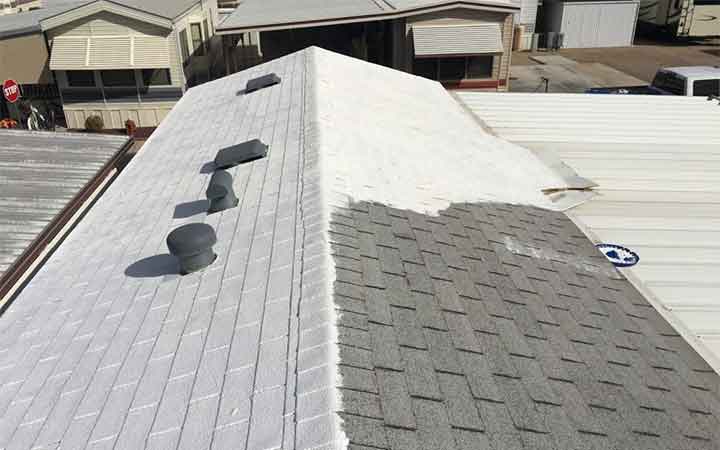
Elastomeric roof coating is a form of protection coating. The coating can be applied to almost any type of roof. Application of the coating will seal the underlying material of the roof. It will lead to reduced wear and tear due to exposure to weather elements.
The application of elastomeric roof coating can also prevent roof leaks. In this blog post, you will learn why it is a good Huntsville roofing option.
Elastomeric Roof Coating
Elastomeric roof coating involves coating the roof with a sealant. The roof sealant is flexible that stretches and moves with the underlying material. The coating can be used on residential, commercial, and industrial roofs.
The term elastomeric refers to the stretching ability of the material. It is a flexible material that can be applied to concrete roofs, metal roofs, bitumen, and modified bitumen roofs. The roofing material can also be applied over new EPDF, membranous and polyurethane foam (PUF) roofs.
An elastomeric roof coating can be applied to flat or low slope roofs. The coating is applied to the surface similar to the application of regular paint.
Benefits of Elastomeric Roof Coating
Elastomeric roof coating has various benefits. One of the prime benefits of the roofing material is that it can be applied to almost any type of Huntsville roofing surface.
The angle of the roof doesn’t affect the application of the elastomeric coatings. The coating is different compared to most other roof coatings that can only be applied on flat roofs. This type of coating can handle any angle and slope.
A roof coated with an elastomeric coating offers excellent protection against weather conditions. The coating acts as a rubber that stretches when subject to high temperature and retains its shape in cooler temperatures. The elastomeric properties prevent cracking of the coating upon exposure to high heat or cold.
The strong sealant properties also make it a great insulator. The coating keeps the house warm during winters and cools during summers.
Types of Elastomeric Coating
Elastomeric coatings are of different types. One of the types of elastomeric coating is acrylic coating. This type of coating is suitable for homes with a steep slope. The coating type is easy to clean. Moreover, the coating material is considered safe for the environment.
Another type of elastomeric coating is butyl coating. This type of coating is suitable for roofs with a low slope. It is also appropriate for roofs made of asphalt, modified bitumen, or single-plied roofing.
Polyurethane elastomeric coating is a high-quality coating that is a good option for EPDM roofs. Moreover, the coating can be applied to the single-ply application of PVC.
Silicone elastomeric coating is the fourth type of coating. This type of coating is particularly suitable for roofs treated with PUF. It boasts of excellent protection against weather elements.
How Long Do Elastomeric Coating Last?
The elastomeric coating can last for a long time. The new coating is required only once after every ten years. Regular inspections and maintenance of the roof can add ten more years to the life of the roofing material.
Most types of elastomeric coating have both waterproof and weatherproof properties. They effectively seal the roof thereby minimizing damage due to exposure to water and weather elements. The roofing material is resilient and rugged. You can walk over the roof without worrying about damaging the coating.
Contact qualified Huntsville roofers for inspection of your roof. Experienced roofers will assess the condition of your roof to recommend the best material for the roof. The roofing material cannot be painted. You must consider this point about elastomeric coating before contacting a Huntsville roofer for the installation of the material.

